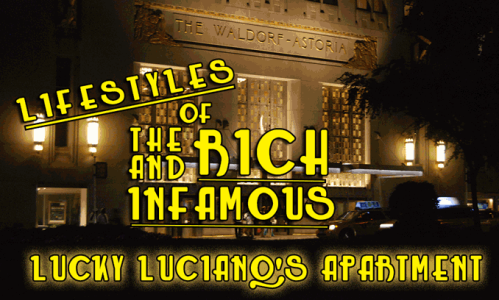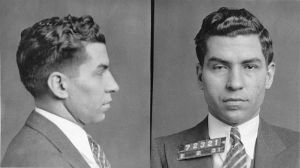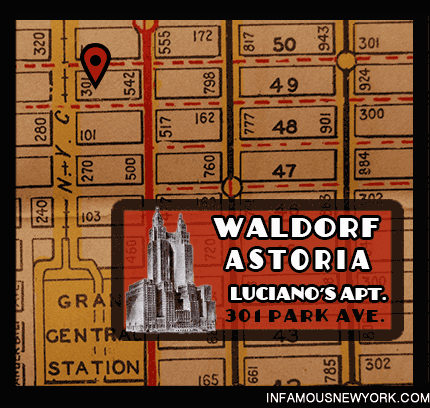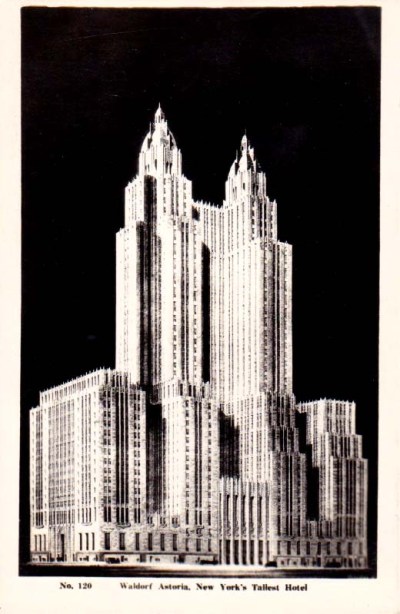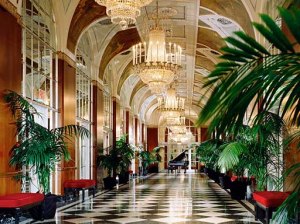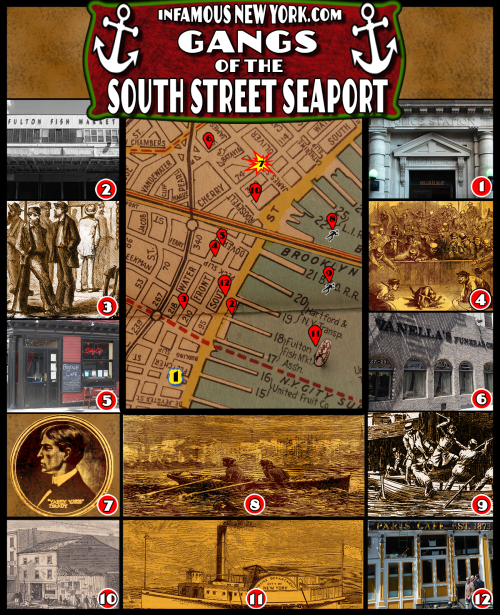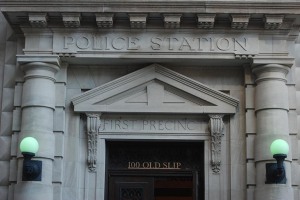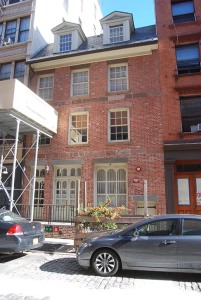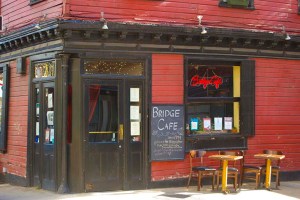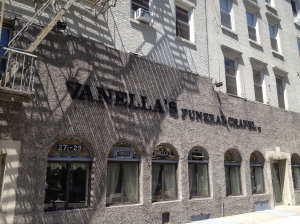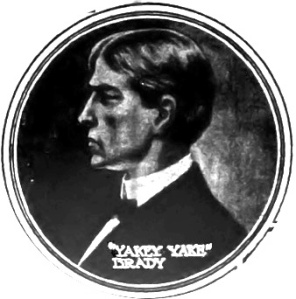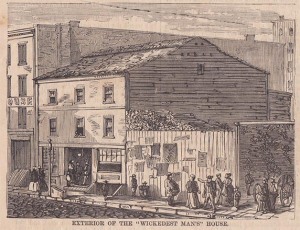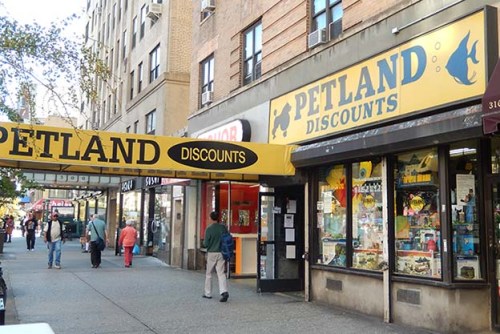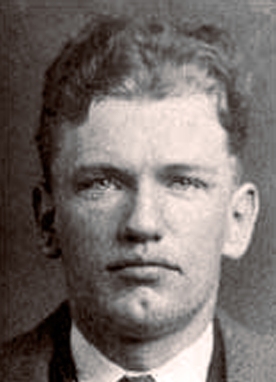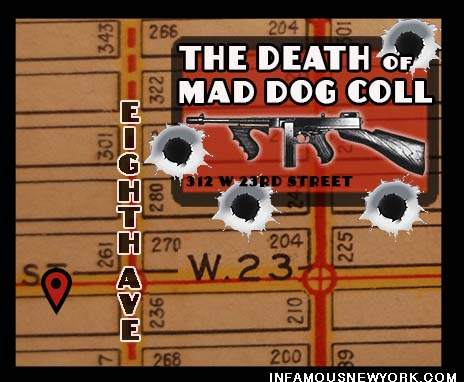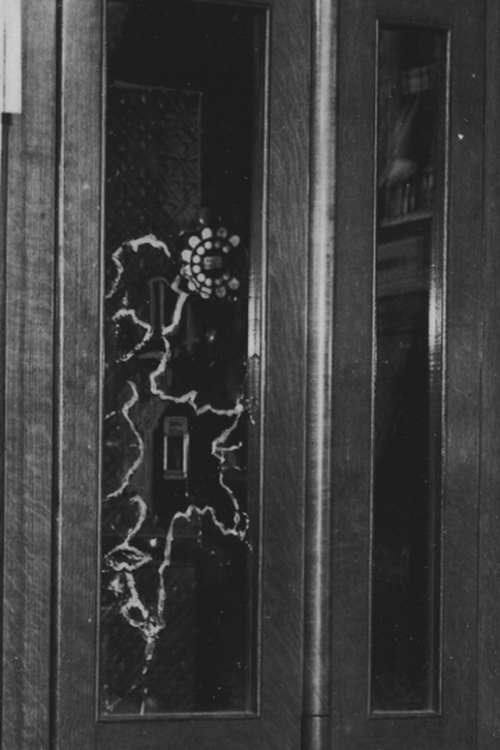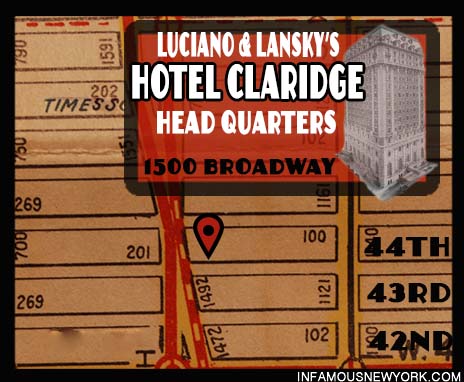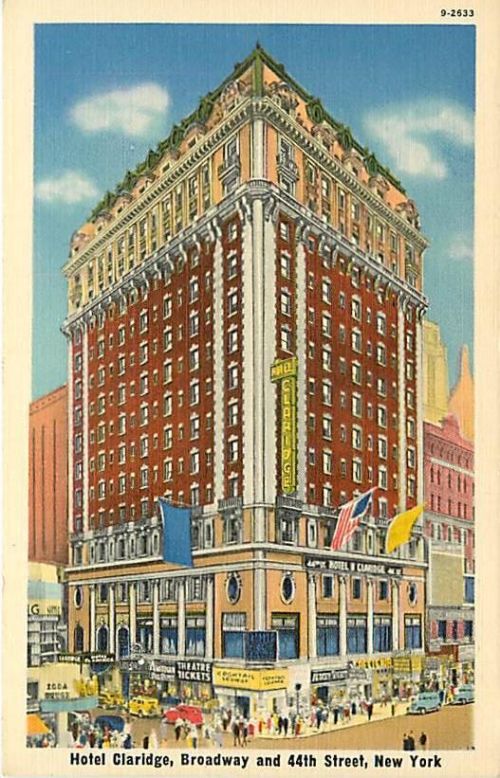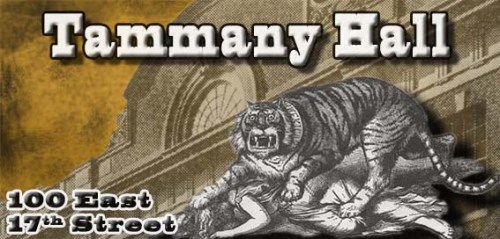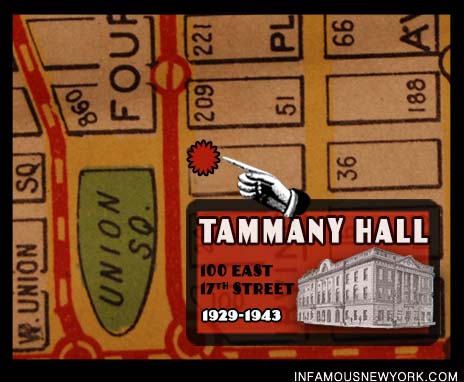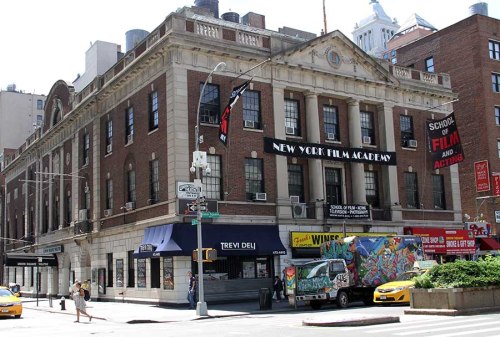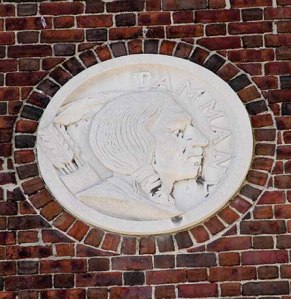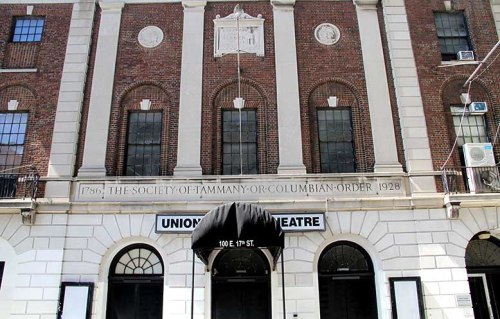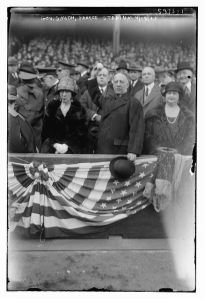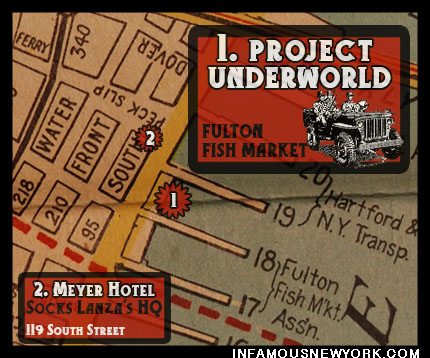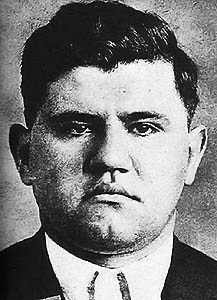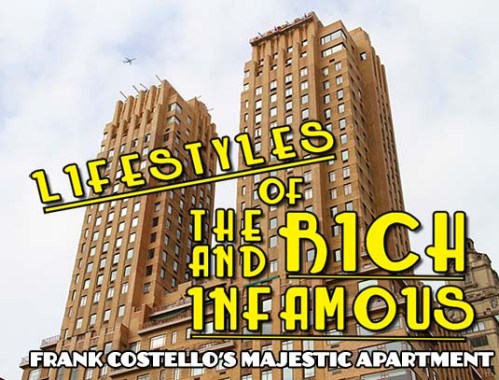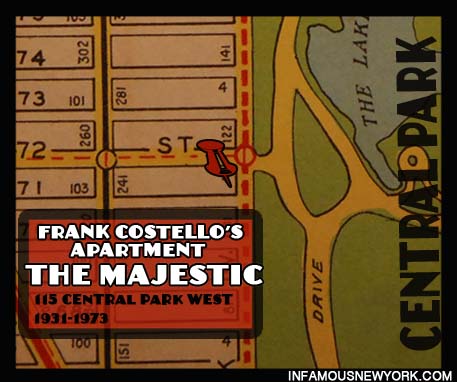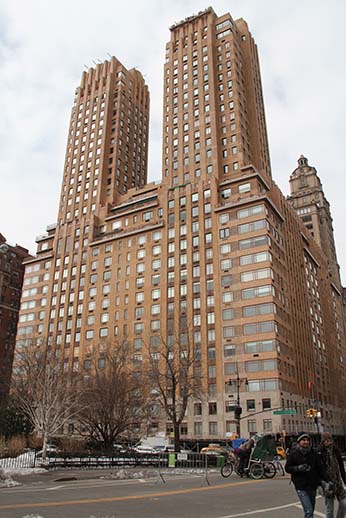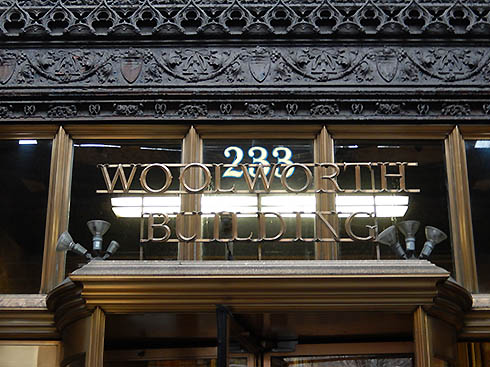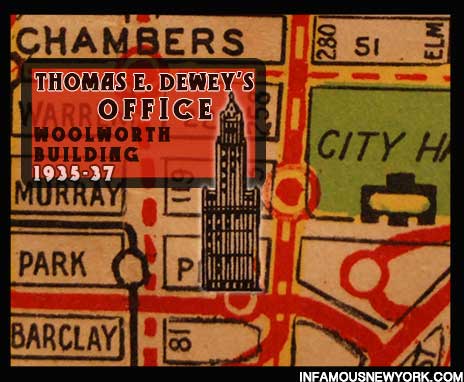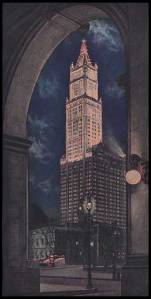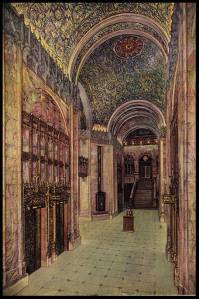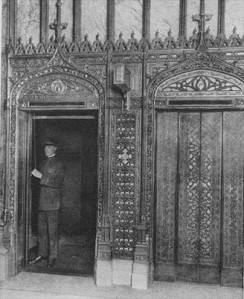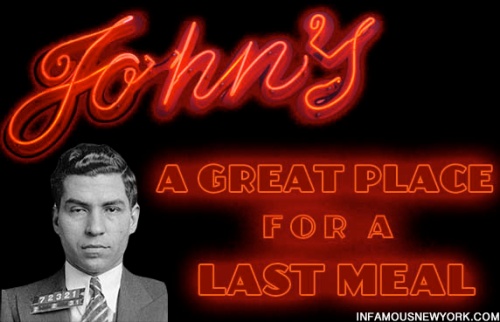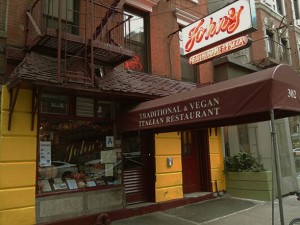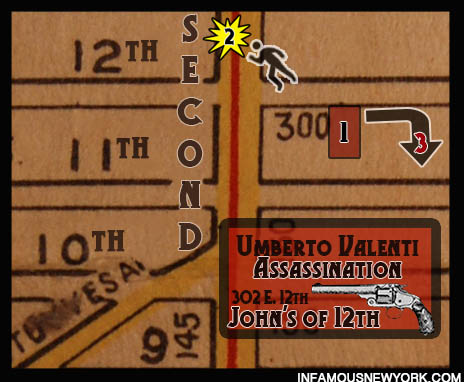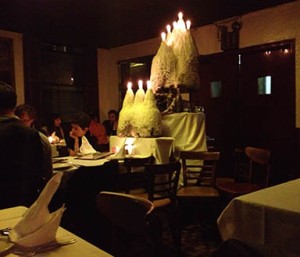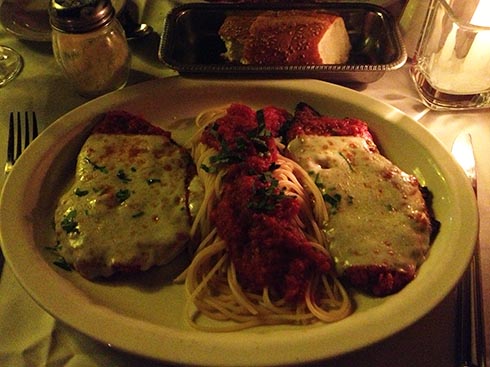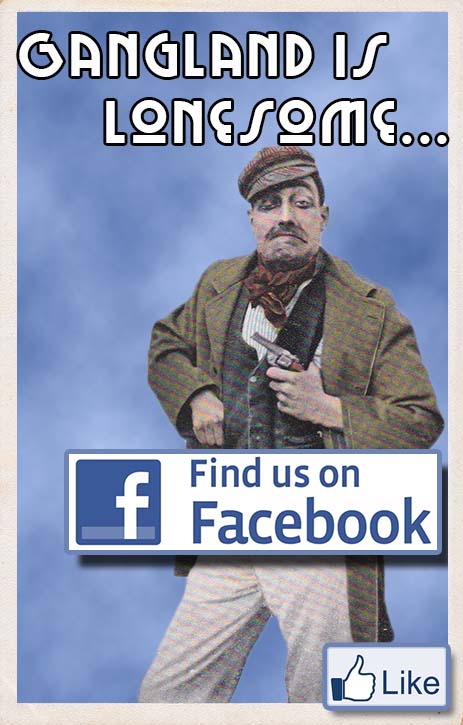Little Italy Mafia Walking Tour Map
Little more than a 3-block tourist trap, New York’s Little Italy is on the verge of extinction. With Chinatown closing in from the east and SoHo gobbling up its southern real estate, only the section of Mulberry Street between Broom and Canal remain visibly Italian. Gone too is the dreaded presence of the Mafia which was once inextricably woven into the fabric of daily life. This Mafia walking tour will take you back to the days when mobsters, rather than hipsters, ruled the streets of Little Italy.
1 Giuseppe “The Clutch Hand” Morello’s Spaghetti Restaurant
Address: 8 Prince Street
Status: Standing
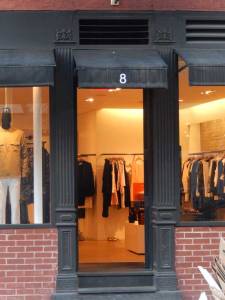
Giuseppe Morello’s spaghetti parlor was the scene of the brutal Barrel Murder
He was the patriarch of the first America Crime Family. A Sicilian bandit with a deformed right hand, Giuseppe Morello earned his nickname “the Clutch Hand” from his twisted talon. The undisputed boss of Manhattan’s uptown and downtown Italian districts, Morello led a vicious band of old world cutthroats from a spaghetti parlor at 8 Prince Street. Morello’s gang included his half brother Ciro Terranova, the self styled “Artichoke King”, his second in command and brother-in-law Ignazio “Lupo the Wolf” Saietta, his chief enforcer Tomaso Petto the Ox, and a multitude of kinfolk.
Murder, robbery and Black Hand extortion, the Mafiosi did it all, but counterfeiting was their art, a passion that would lead to a gristly murder at 8 Prince Street. On April 14, 1903, Benedetto Madonia, one of The Clutch Hand’s counterfeiters, was stabbed to death, stuffed into a barrel and unceremoniously dumped on East 11th Street as a gangland message. However, the message proved to be too strong and both the Secret Service and Joseph Petrosino, a rising star in the NYPD, would be on Morello’s trail, ultimately bringing about his downfall.
2 Lupo The Wolf’s Import Market
Address: 9 Prince Street
Status: Standing
As ferocious as his namesake, Lupo The Wolf was a terrorist long before the word became fashionable. Through violence, bombings, Black Hand letters and murder, he extorted everyone and everything in turn-of-the-century Little Italy. Related by marriage to Clutch Hand Morello, Lupo became head of Downtown Little Italy for the Italian Harlem based Morello. Lupo operated one of many grocery stores he owned from 9 Prince Street.
3 Barrel Murder Arrest
Address: Bowery and Delancy Street
Hoping to smash Morello’s counterfeiting ring and solve the Barrel Murder, the Secret Service and Joe Petrosino pounced on Petto the Ox and Giuseppe Morello on the corner of Bowery and Delancey Street. The Mafiosi were armed to the teeth with daggers and licensed revolvers. Unfortunately, the charges did not stick to Morello, but a pawn ticket for Benedetto Madonia’s watch linked Petto the Ox to the Barrel Murder. The mafia enforcer disappeared while on bail and was never imprisoned for the crime.
4 Joe Petrosino Square
Kenmare and Spring Street
Status: NYC Park

When it came to New York firsts, Lt. Joseph Petrosino could claim many. He was the NYPD’s first Italian speaking officer, the first Italian American on the Force to obtain the rank of lieutenant, and the first, and only, NYPD officer killed on foreign soil. The city built this park on Kenmare and Spring Street to honor him in 1987.
To combat the rise of Italian Black Hand crimes, the city formed the Italian squad with Petrosino at its helm. In 1909, Petrosino traveled to Sicily in search of a secret society of criminals infiltrating America and Vito Cascioferro, the powerbroker behind the Morello Crime Family. The trip would be Petrosino’s undoing. Mafia assassins put the Police Lieutenant on the spot, assassinating him on the streets of Palermo. (Click to read more about Joe Petrosino)
5 Salvatore Toto D’Aquila’s Home
Address: 91 Elizabeth Street
Status: Standing
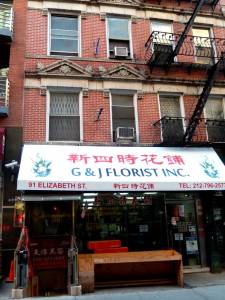
1920s New York Boss of Bosses, Toto D’Aquila’s home.
After Giuseppe Morello’s conviction for counterfeiting in 1909, the Clutch Hand’s remaining brothers retreated to 107th Street in Italian Harlem, allowing Salvatore Toto D’Aquila to become the ruler of Downtown Little Italy, and the Italian Mafia’s boss of bosses in New York. By the time of Prohibition, D’Aquila became quite wealthy despite his lowly tenement home at 91 Elizabeth Street. His encroachments on Giuseppe “Joe” Masseria’s open-air liquor markets on Kenmare, Broom and Grand Streets would erupt into all out war in 1920.
6 Umberto’s Clam House, the Murder of Crazy Joe Gallo
Address: 129 Mulberry
Status: Moved
http://www.umbertosclamhouse.com/
As crazy as they came, Joe Gallo earned a reputation for shaking up the mob. With his Red Hook Brooklyn based brothers, Larry and Albert, Gallo and his gang took on a succession of bosses for control of the Profachi and later Colombo Crime Family.
On April 7, 1972, Gallo, his family and Mafia crew walked into Umberto’s Clam House, a well-known mafia restaurant owned by Matty the Horse Ianniello, to celebrate Gallo’s birthday, a completely insane move. The mob wanted Gallo dead for the slaying of Joseph Colombo at an Italian-American Civil Rights League rally at Columbus Circle.
At 4:30 a.m. four gunmen slipped into Umberto’s back door and violated a mafia ban on brazenly killing gangsters on the streets of little Italy. Bullets slammed into Gallo who limped out and collapsed on the street. Gallo’s gang opened fire on the escaping hitmen. Bullet pockmarks can still be found at Graziano’s funeral home across the street. Gallo’s murder remains unsolved.
7 Joe The Boss Masseria’s Bootleggers Curb
Address: Kenmare, Broom and Grand Street
By some quirk of geography, Giuseppe “Joe” Masseria, a small time hood and recent mafia import, struck prohibition gold. His small gang ran the streets of Kenmare, Broom and Grand in the shadow of NYPD Headquarters. For whatever the reason, these streets became know as the Whisky Curb or Bootleggers Curb, an open air booze market where speakeasies and saloons came to trade bottles of pre-prohibition hooch.
A quick hand with a gat and even quicker feet made the portly Masseria’s reputation as a supernatural Mafiosi. Masseria grew incredibly wealthy and Toto D’aquila wanted a cut. Bootleggers Curb soon became shootout central. Dodging bullets and leading shootouts, Masseria led a prohibition gang war against New York’s Boss of Bosses Toto D’Aquila for control of Little Italy.
After his release from prison in 1920, Giuseppe “the Clutch Hand” Morello joined forces with Joe Masseria against Toto Aquila. With the help a new recruit named Charley Lucky Luciano and his Jewish Mob friends, Toto Aquilia was bumped off in 1928.
8 NYPD Headquarters, The Central Office
Address: 240 Centre Street
Status: Landmark (Luxury Condos)
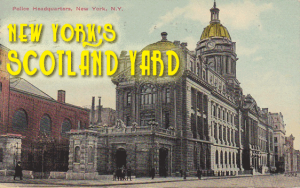
Most mobsters of any consequence have spent at least one overnight in the basement of 240 Centre Street. From 1909 to 1973 this beaux-arts masterpiece served as NYPD Headquarters, the nerve center of the New York Police Department. Click to learn more about Old NYPD Headquarters.
9 Lucky Luciano Rats
Address: 164 Mulberry
Status: Standing
Salvatore Luciana kept his fingers in many pies. Gambling, bootlegging, prostitution and murder for hire all kept him wealthy, but Lucky wanted more. Under the direction of his mentor Arnold Rothstein, Charley Luciano turned to narcotics, and it proved to be a mistake. By 1923, the mobster was the darling of prohibition high society, and the Federal Bureau of Narcotics collared Lucky with a pocket full of dope. In exchange for his freedom, Luciano revealed the location of a trunk of Heroin stashed in the basement of 164 Mulberry Street. The arrest tarnished Lucky’s reputation among Manhattan’s socialites, inspiring him to throw the biggest party of the decade.
10 Café Roma
385 Broome Street
Status: Open for Business
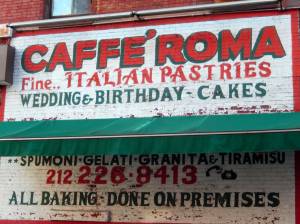
The Westies kidnapped the owner of Cafe Roma, Eli “Joe the Baker” Ziccardi
Back in the 1970s, Eli “Joe the Baker” Ziccardi did more than make cannoli at the Café Roma. The Genovese capo ran the policy games for Fat Tony Salerno from this downtown café, making Zicardi a target for opportunistic gangsters like the Irish Westies. In the 1977 under the orders of Hells Kitchen’s gang lord Mickey Spillane, the Westies put the snatch on Zicardi. Salerno begrudgingly paid the $100,000 ransom to the Irish Mob, but Zicardi was never seen again. Because of the kidnapping and construction projects on the Westside, all out war broke out between the Irish and Italian mobs resulting in Spillane’s murder and the death of three of his lieutenants.
11 John DeSalvio Playground or Jimmy Kelly Park
Address: Spring and Mulberry Street
Status: NYC Park
An original gangster who predated the coming of the Mafia, Jimmy Kelly knew all of the angles. His real name was Giovanni DeSalvio, but the middleweight boxer changed his name to Kelly to make inroads in the Irish controlled boxing world of turn-of-the-century New York. However, Kelly failed to make it as a pro-boxer and put his knuckles to work at Mike Salter’s Pelham café protecting the club’s singing waiter Irving Berlin (click to read the story). Under Salter’s wing, Kelly took up politics and full time gangsterism. When Salter fled the country for election fraud, Kelly took his place as a Tammany ward heeler running into innumerable gang wars with hunchback mobster Humpty Jackson. Click to read more about Humpty Jackson.
11 Johnny Dio and Al Marinelli’s Headquarters
Address: 225 Lafayette
Status: Luxury Condos
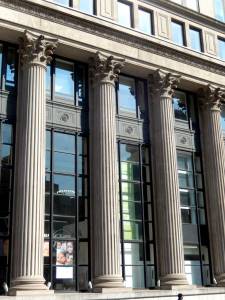
In the 1920s, 225 Lafayette was a hub of Mafia activity.
For much of the history of New York City, the criminals worked for Tammany hall, not the other way around, but with the coming of the Mafia and prohibition that was about to change. Nowhere else in the city was the intertwining of crime and politics more apparent than 225 Lafayette Street. Built in 1909 in the heart of Little Italy to house the East River Savings Bank, 225 quickly evolved into a mafia hub.
A close personal friend of Lucky Luciano, Albert Marinelli set up the political headquarters of his Al Marinelli Association at 225 Layafette. With the help of Luciano’s gunmen, Marinelli unseated Tammany’s Irish incumbent to become the first elected Italian-American Distract Leader in the city. Luciano and Marinelli were so chummy that they shared a room at the 1932 Democratic Convention. The politician made a fortune with Luciano, which attracted the attention of Special Prosecutor Thomas Dewey.
Dewey later accused Marinelli of voter fraud and corruption. Dewy explained:
“He has a luxurious estate surrounded by an iron fence on Lake Ronkonkoma, way out on long island. From his several motorcars he chooses to drive a Lincoln limousine. His Japanese butler, Togo, serves him well.” Thomas Dewey
With the spotlight on him, Marinelli stepped down, making way for John DeSalvio to become the 2nd Assembly District Leader.
On another floor of 225 Layafette, Jimmy Doyle Pulmeri and his nephew Johnny Dio Dioguardi set up their Five Boroughs Trucking Service Association, a thinly veiled shakedown scheme. Their strong arm racketeering tactics eventually won control of all Garment Center trucking. Business was brisk. So brisk that Doyle and his partner Dominick Didato shot each other in their offices. Neither man could explain to police why their legally licensed revolvers simultaneously malfunctioned. Didato was found dead days later. After the Castellmarese Mafia war, Dio and Doyle joined the Gaetano Reina and later Lucchese Crime Family. (Click to read more about Jimmy Doyle) Like everything else in NYC, the building has been converted to luxury condos.
13 Aniello Dellacroce’s Apartment
Address: 232 Mulberry Street
Status: Standing
A stone cold killer and founding member of Murder Inc., Aniello Dellacroce served as Albert Anastasia’s murderous protégée and future Gambino Underboss. Dellacrose maintained a life long address at this tenement at 232 Mulberry Street across the street from his headquarters, The Ravenite.
14 John Gotti’s Bunker: The Ravenite Social Club:
Address: 247 Mulberry Street
Status: Shoe Store
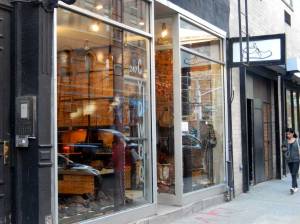
John Gotti’s Ravenite Social Club is now a shoe store.
There is no better place to conclude a Mafia walking tour of Little Italy than the Ravenite Social Club at 247 Mulberry. Buried in the heart of historic little Italy, the once bricked up, fortified storefront encapsulated the entire history of the mafia in New York. The club started life as a mob joint in 1926 as the Knights of Alto Social Club. Regular patrons included Lucky Luciano and Albert Anastasia. After Carlo Gambino and Vito Genovese toppled Anastasia, Gambino purchased the building, renamed the club the Ravenite, and installed Dellacroce his underboss.
Housed within the wall’s of today’s CYDQOG Shoe Store (the Ravenite’s original floors remain in the store), Dellacroce would take an up-and-coming hoodlum named John Gotti under his wing. After years of underworld dealings, Dellacroce was terminally ill and on trial for being a member of the Mafia Commission.
After the death of Dellacroce, John Gotti rubbed out family boss Paul Castalano, took over the Ravenite and installed himself as boss of the Gambino Family. FBI electronics wizards eventually bugged the club and recorded hours of incriminating evidence. Gotti was convicted in 1992 of murder, illegal gambling, bribery, tax evasion and a host of other crimes. Federal Marshals later seized the building and auctioned it off to the highest bidder. Click to read a longer post on the Ravenite Social Club.


